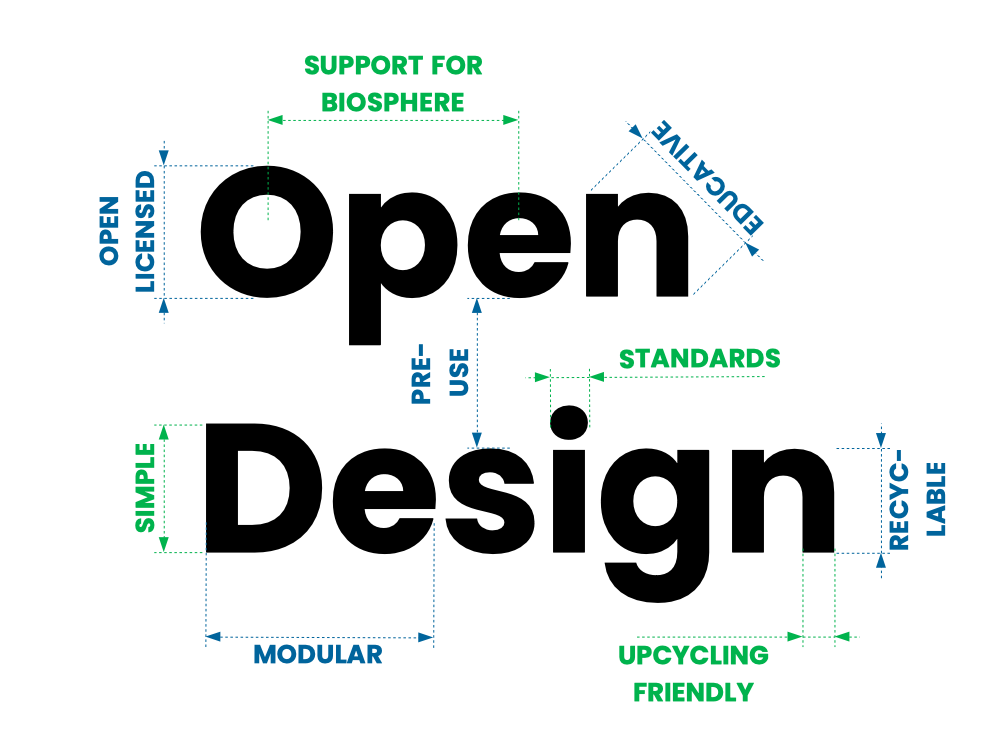Log
- IDFF, Oktober 2021, online
Link
opencircularity.info/ock
[ o°]
*
<start sharing>
Hello,
i have a presentation for some parts of this talk. And it is online. You can click through it while I speak. Or save the link for later. Here it is. I also post it in the chat.
<unshare>
Hi
But who am I? My name is Lars Zimmermann. I am a designer, artist and educator from Berlin Germany. I run a design studio for open circular design, environmental activism and city making called Mifactori.
I spent the last years researching the and advocating for the combination of Open Source Hardware and Circular Design. To improve both. Open Hardware & Circular Design.
And I am really happy about this invitation today and the chance to show to you some of our insights and approaches.
*
2 Designs
<show into the camera>
I’ll start this with two designs or design studies from our studio. My goal is a bit to shock you. But wait for it.
<start sharing>
– Brio Lamp
– Schoeneberg Stool – The Upcycling Version Img 1 & Img 2 – Assembly
Why do I show this? Because these designs will help to illustrate some of the design principles I am going to show to you right now.
*
What is Open Circular Design?
As I said I research the combination of Open Source and sustainable Circular Economy. I tried to show in texts, talks and events that on a theoretical level they make a great match. For many reasons.
-
- The sustainable circular design needs transparency? Open Source is a possibility to build products and businesses based on transparency.
- Open Source Hardware wants to enable creative productivity with products? Yes. The Circular Economy wants to enable all kinds of (re)creative productivity with products. Let’s put them together for synergies.
Starting from this questions our studio started to design objects. And after a while of number of more concrete sub strategies emerged that inform real hands on design work. I am going to share them here with you.
They are collected in an article called “What Is Open Circular Design?”. It is 9 strategies in total. The more of them come together in a design the more open and circular it is. Here is a visual with all of them. Let’s go through it step by step.
*

Article: What is Open Circular Design Vs 1.2 (english)
Article: What is Open Circular Design Vs 2.0 (german, pre edit version)
<unshare screen.>
<share screen>
Links
- PreUse
- Open Structures & 3erlin Grid
- Don’t invent a new modular system try to use (or hack into) an existing one.
Final Version?
This brings (brought) up interesting questions around: What is the final version of such a design? What do I mean by this? I wrote an article a while back called:
What is the final version in Open Circular Design?
<don’t click article link. Use the links below to tell the story.>
- Lamps “from light”
- Lamps “hypercircularity”
- Lamp “solutions”!
- The Open Shelve Nodes Project
- Schoenberg Stool
- Ringbein *
?
Is this challenging how we see and understand design? What is the role of a design? Or a designer?
And maybe this changes our heroes. Let me show you one of my big heroes – or people that inspire me. Do you know this guy (alt pic)? Or this guy (alt pic)?
(…)
Both found (or made) a tool and inspired, organized and stabilized a community around it which lead to the building of something big and useful. Maybe as designers of circularity we should aim at something like that.
*
Questions for teaching
OK. This talk will be followed by a workshop. And I brought a couple of questions for the workshop to discuss among people who teach design. It is open questions not suggestive questions – I mean them as questions.
I’ll use the last minutes of my talk to read them and maybe explain them to you. They work as some kind of summary for my presentation as well.
?
-
- Do we teach our students enough about IP law and its benefits and downsides regarding the sustainability of our products. (Do we teach about open licenses?)
-
- Heros/role models? Who do we put in the center of the attention? What kind of design ideals are pushed forward by this? Should we replace some of these heroes? Or grow the family?
-
- If you are trained to identify sustainable design and search for it in an average shopping mall you will be overwhelmed with how bad the situation is. Do we give this enough attention? Should we give this more attention? If not how will the students ever have enough energy to change the situation? (Lock In Effect)
-
- The tools we use. Which tools get most of the attention in your university? The laser cutter? The 3d printer? Scissors? How many of them support the opposite of the design ideal of truly sustainable design?
-
- When we teach critical thinking how far do we reach out? Beyond the product level to the systems level? And even to “capitalism”? What shapes the products we shape?
–